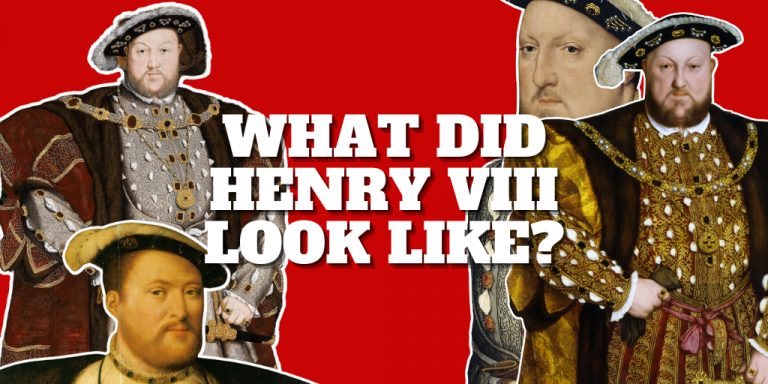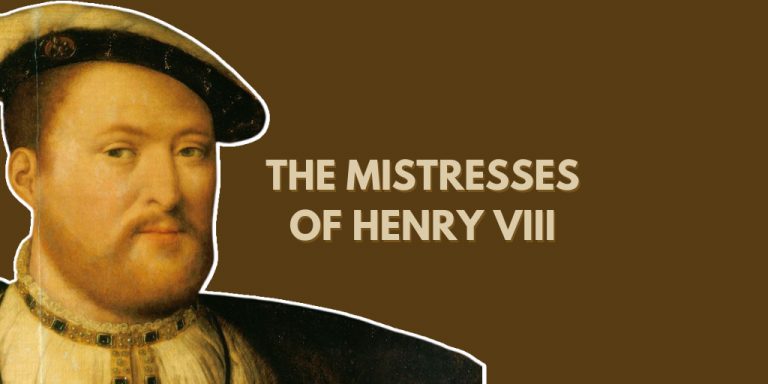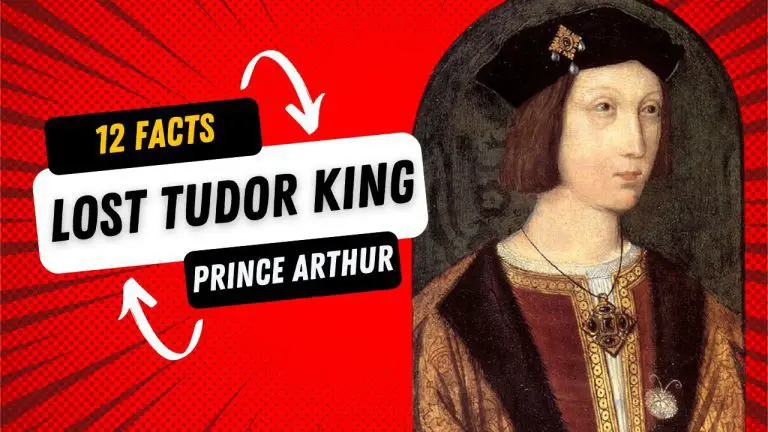Important Gods and Goddesses of Ancient Egypt
Egyptians over the eras have created a plethora of gods and goddesses. More than two thousand, if one were to count. Heavenly deities who were given the credit and blame for the pleasures and blessings enjoyed and suffered by all the souls of Egypt.
These good many divine creations are responsible for every possible occurrence: the sunrises and sets, the flow of the Nile, and the pinpoints of light in the night sky. The reason behind the need for all these shapers and controllers of the environment was to provide the essential primary action leading to the cause and effect that is inevitable.
Ra (Re)
The indubitable father of all creation and king of the deities. Ruler of the sky, the earth, and the underworld, he was the most important god of Egyptian religion. Not only the controller of the sun, Ra was also able to physically be the sun! Credited as patron of the sun, heaven, light, kingship, and power, he could actually be the day, identified with the noon-day sun.
Symbolized by a large, golden disk, Ra in human form is depicted as a man with a hawk head on top of which is the golden disk with a serpent wrapped around its base like a crown.
The belief is that humans were created from Ra’s tears and sweat which explains why the Egyptians are referred to as the Cattle of Ra. The Myth of the Heavenly Cow – or “The Destruction of Mankind” – tells of man’s rebellion against the sun god in his old age, and Ra’s response to reorganize the cosmos. As punishment for plotting against him, Ra sends his daughter Hathor, the flaming protective Sun Eye, to smite all mankind.
The sun is the life giver and therefore Ra is a principal god who created the universe and is the source of life. While in the underworld, Ra merged with the god of the dead, Osiris.
Osiris
Osiris was first the ruler of Heaven and then the Lord of the Underworld, or the god of the deceased. He was the progeny and oldest son of Geb, the Earth deity, and Nut, the sky goddess. He married his sister, Isis, who was the goddess of motherhood, magic, fertility, death, healing, and rebirth. The two were said to be deeply in love as far back as in Nut’s womb.
Osiris is depicted with green skin and a pharaoh’s beard, wearing an Atef crown. He is partially mummy-wrapped at the legs and holds a symbolic crook and flail.
Mythology tells of Osiris’s brother Seth’s unreasonable jealousy of Osiris. To feel better about himself Seth not only killed Osiris, but he also dissected him and dispersed his body parts all around Egypt. Seth went on to take his brother’s place as king of Egypt and married their sister, Nephthys. Nephthys pitied Isis, who was so thoroughly consumed by the death of Osiris that she wept without solace.
Isis decided to use her magical powers to find Osiris and restore him to life for as long as it took for them to conceive a child together. Nephthys and Isis gathered all the parts of Osiris’s body and put him back together, using linen wrappings as bounds. Isis breathed life back into his body and he was resurrected long enough for her to magically conceived Horus. His purpose thus fulfilled, Osiris descended to become Lord of the Underworld.
Having experienced resurrection, Osiris was thereafter connected to the cycles in nature, germination, the annual flooding of the Nile River, and the heliacal rising of Sirius and Orion at New Year.
Horus the Younger
And then the gods got together and procreated to make new gods and goddesses, and Horus the Younger is one of them. Osiris magically produced him posthumously with Isis, who was both his wife and his sister. Osiris in death relinquished his position as ruler of Heaven to take up his new post as the Lord of the Underworld, leaving his son Horus to take up the reins as the new ruler of Heaven. As such Horus represents rebirth or life out of death, and he avenges his father’s death on his uncle Seth.
Baby Horus takes human form but develops a falcon’s head on his human body as an adult. Statues from the Ptolemaic period of Horus the Child depict a young boy with his finger to his lips. It is assumed this is a reference to having to remain hidden from his uncle Seth as a child. The young Horus, having suffered as a child, represents a promise by the gods to take care of suffering humanity.
Geb
Geb was believed to be the deity of Earth and Ancient Egyptians referred to Earth as the House of Geb. He was Ra’s grandson and the son of the deities of air and moisture, Shu and Tefnut respectively. As the twin of the goddess of the sky, Nut, Shu (Air) had to physically separate them at birth, so tightly gripped were they in each other’s arms. This parting served to explain the separation of the earth and the sky by the air we breathe on Earth.
Geb was depicted as a man with the head of a snake, seen as the father of snakes. He was also shown as having a head of a goose because the hieroglyph for his name was a goose.
Pharoah’s throne was referred to as The Throne of Geb because the pharaohs believed they were descendants of Geb. The belief is that he is also the father to the deities Osiris, Isis, Seth, and Nephthys.
Isis
Isis was the goddess of fertility, motherhood, magic, death, healing, and rebirth. IShe was the first daughter born to Geb, the god of the earth, and Nut, the goddess of the sky. Isis married her brother, Osiris.
Isis is depicted as a woman in a long sheath dress, wearing an empty throne as a headdress, which symbolizes her husband’s death and her role as the seat of the pharaoh’s power. She is also depicted wearing a headdress of a solar disc and horn and more rarely with the head of a cow. Isis is also shown with her son Horus together with a vulture and wearing a crown and as a woman holding a lotus. When shown as the goddess of the wind, she is depicted as a woman with outstretched wings.
Her symbol in the heavens is the star Sept (Sirius). Cows, snakes, and scorpions are her sacred animals, and she is the patron of hawks, doves, swallows, and vultures. Isis showed the Egyptians the advantages of cultivation along the river Nile.
The legend known as the annual celebration of The Night of the Drop was born out of the belief that the tears Isis shed for her dead husband Osiris caused the annual inundation of the Nile, which was preceded by the appearance in the sky of the star Sept.
Ptah/Phthah
Ptah is the creator-god, even the creator of other creator gods, the maker of things, and the patron of craftsmen, most notably sculptors. He conceived the world and made it real through the creative power of speech.
The very etymology of the English word Egypt is attributed to Ptah. Egypt comes from the Greek Aigyptos, apparently derived from the Middle Egyptian ḥwt-ka-ptah which means House of the Soul of Ptah.
He is depicted at times as a deformed, naked dwarf, but more typically as a green-skinned man in a shroud with a divine beard and a skull cap. He is shown holding a sceptre depicting these 3 symbols of ancient Egyptian religion: dominion (Was), life (Ankh), and stability (Djed). Together they represent the three creative powers of the god: dominion, life, and stability.
Often associated with the god Bes, Ptah was originally the local deity of the capital of Egypt, Memphis. With Sekhmet and the youthful god Nefertem, he formed the Memphite Triad of deities. Memphite theology focused on this very triad and Ptah was considered the patron and protector of the very important city of Memphis. Memphis was probably the largest settlement in the world at the time, with a population of around 30 000 or more.
Sobek/Sebek/Sebek-Ra/Sobeq/Suchos/Sobki/Soknopais
Sobek was the ancient god of crocodiles and the god of the Nile who is believed to have created the Nile from his sweat. He is known to have brought fertility to the land. As the Lord of the Waters, he is believed in certain sects to be the creator of the world who ascended from the Dark Water or primaeval waters of Nun to create order in the universe.
Mythology has it that Sobek laid eggs on the bank of the waters of Nun to create the world. Aside from being a force for creation, he was an unpredictable deity, allied at times with the forces of Chaos. This lends credence to the likelihood that Sobek was first a dark god to be appeased whose strength and protective qualities became valued as a means of defending the pharaoh and the Egyptians.
He was considered the patron of the army who protected the justified dead, reviving their senses and restoring their sight in the netherworld. Sobek was also thought to be able to protect the pharaoh against dark magic.
Sobek is associated with Horus who took on a crocodile form when retrieving his father’s body parts from the Nile. He is also said to have been helpful during the birth of Horus to Isis. On the opposite end of the spectrum, he was also linked to Horus’s uncle Seth who murdered Osiris. The Egyptians enlisted Sobek’s protection in the afterlife by interring mummified crocodiles, crocodile eggs, and foetuses in the tombs with the dead.
Sobek was depicted as a man with the head of a crocodile, as a crocodile, and as a mummified crocodile. He is shown wearing the sun disk of Ra or the Atef crown, the headdress of Amun, and is worshipped as the manifestation of Amun-Re. He is shown carrying the Was sceptre, symbolising power, and the Ankh, symbolising life.
A twelfth-dynasty temple at Medinet Madi is dedicated to Sobek, his wife Renenutet, and Horus. Here, tame crocodiles adorned with precious jewels lived in a sacred pool where they were hand-fed honey cakes and prime cuts of meat.
Bastet
Bastet was the goddess of pleasure, protection, and the bringer of good health. Cats were considered to be her physical form. Ancient Egyptians regarded cats very highly, even as demi-deities. Cats kept diseases at bay by killing vermin and they protected the crops. Today, it is still believed by some that her protection is cast over modern cats.
Bastet’s form and powers transformed over time. She was Ra’s daughter, Sekhmet’s sister, Ptah’s wife, and Mihos’s mother. She was said to ride through the sky every day with her father, the sun god Ra. She watched over Ra as his boat pulled the sun through the sky. She turned into a cat at night to protect Ra against the serpent Apep, his greatest enemy.
Nicknamed Goddess of the Rising Sun, the Lady of the East, and the Sacred and All-Seeing Eye, she is also the Goddess of the Moon, the eye of the moon, and the eye of Ra.
Bastet was depicted with a slender female body and the head of a cat.
Shu
Shu means emptiness or he who rises up. He was the god of lions, peace, air, and wind. As the god of air, Shu was a pacifier with a cooling and calming influence. He is a primordial Egyptian god and one of nine deities of the Ennead of the Heliopolis cosmogony. He was married to his sister, the goddess Tefnut.
Heliopolitan theology has Atum creating the first couple of the Ennead either by masturbating or by spitting. This couple was Shu and Tefnut. Shu fathered Nut and Geb. He was grandfather to Osiris, Isis, Seth, and Nephthys and great-grandfather to Horus and Anubis.
Shu was depicted as the atmosphere separating the earth and the sky and is also therefore known as the wind. He is shown wearing an ostrich feather, a symbol of lightness and emptiness. Fog and clouds were his elements.
Sekhmet
Sekhmet means She who is powerful or the One who loves Ma’at. She was the goddess of the hot desert sun, chaos, war, plague, and healing. She was the patron of physicians and healers, and the protector of the pharaohs, whom she led in warfare.
Sekhmet was the daughter of the sun god, Ra, created from the fire of Ra’s eye when he looked upon Earth. She is an important goddess who manifested Ra’s vengeful power, the Eye of Ra. She was Ra’s weapon to destroy humans for disobeying him and for not living in accordance with the principles of Ma’at. Mythology tells how Ra poured out beer dyed to resemble blood in an attempt to stop Sekhmet’s onslaught. His trick worked when she became drunk on the beer and returned peacefully to him.
She is seen as the daughter of Geb (earth), and Nut (sky) and the wife of the god Ptah with whom she produced a son, Nefertum. She was also considered the mother of Maahes, a lion god, and sister to Bastet, the cat goddess.
She was said to breathe fire, her breath compared to the hot desert winds. She was seen as the cause of plagues which she used as her servants or messengers but was also the goddess called upon to keep disease at bay.
Believing Sekhmet to be able to cure every problem, the ancient Egyptians kept on her good side by plying her with offerings of food and drink, burning incense, and playing music for her. They believed that their prayers would be answered by whispering them into the ears of cat mummies since this opened a direct connection to the deities.
Sekhmet was depicted as having the body of a woman with the head of a lion wearing a sun disk and is often depicted as a lioness. In her calmer state, she took the form of the household cat goddess Bastet.
Thoth
The god of the moon, of learning, of writing, and of reckoning, he is also the inventor of writing, creator of languages, scribe, and interpreter. But there’s more. He is the adviser to the gods as well as representative of the sun god, Ra. Ancient Egyptians credit him with inventing hieroglyphs and he was considered scribe of the underworld.
Mythology has Thoth looking out for the pregnant Isis and later healing her son Horus’s eye after Seth injured him. His task was to weigh the hearts of the dead at their judgment and report his findings to Osiris and his judges.
Thoth was a Moon-god. Since the phases of the moon gave it prominence in early astrology and astronomy and its cycles lent some distinction to civil and religious rituals and events, Thoth was perceived as a god of wisdom, magic, and the regulation and measurement of events and time. He was a counsellor to the sun god Ra, whom he stood beside during his nightly voyage across the sky.
Mummified remains of ibis and baboons have been unearthed in cemeteries near Hermopolis and Memphis, and these are the sacred animals of Thoth, buried with the dead.
Thoth is depicted in his human form with the head of an ibis with a headdress of the lunar disk sitting above a crescent moon resting on his head. He may take the form of the ibis directly. This god is also depicted as a form of Ankher or Shu, wearing the respective headdress of that god. Sometimes he is shown wearing the Atef crown or the double crown of Upper and Lower Egypt.
When he is the god of equilibrium, A’an, he is depicted as a man with the head of a baboon or a dog-faced baboon. As the god A’ah-Djehuty, he takes on more of a human form.
Amun-Ra
God of the air, Amun, counts among the eight primordial Egyptian deities. In the Middle Kingdom, he was the King of the deities and he became a nationally worshipped god in the New Kingdom. His eventual merge with Ra saw him become Amun-Ra.
Amun is thought to have first created himself and then the universe and everything in it. He became a visible and invisible deity only when Amun and Ra merged, playing to the ancient Egyptians’ concept of balance or Ma’at.
Amun-Ra was the subject of a cult with whom royal women had a complex relationship. Queen Nefertari was God’s Wife of Amun. Pharaoh Hatshepsut claimed a right to rule as Amun’s ascendant because she was born after her mother was impregnated by Amun.
Amun was the father and protector of the pharaoh. He used oracles controlled by the priests.
Amun is depicted as a goose, snake, ram, frog, royal cobra, crocodile, ape, and also as a man with the head of a ram.
Anubis
This is the god who was responsible for protecting graves as Egypt’s deity of cemeteries and embalming. Anubis had a part in the smooth relocating of the dead, who was much respected in Ancient Egypt, to the afterlife. This was largely achieved through mummification and elaborate ceremonies.
The concept of Ma’at – order, peace, and balance- saw death as equally as important as life. In this, Anubis played an integral role in the transition from life to death and back to life again. In The Book of Going Forth by Day, or the Book of the Dead, Anubis had the task of balancing the heart of those seeking judgement. The weighing of the human heart against Ma’at’s feather of truth took place in the Hall of the Two Truths. Hearts outweighing the feather would render the person non-existent and the soul destroyed. The heavy heart would be eaten by Ammit, the hybrid deity. The deceased with hearts that balanced on the scale with the feather would pass through the underworld, into the Afterlife.
Jackals were kind of synonymous with the dead in Egypt, eating the decomposed, and prowling the cemeteries. It is fitting therefore that Anubis was depicted with the black head of a jackal and seen as the patron deity of jackals. He was seen to keep the bodies safe from being devoured.
Nefertem
Mythology has Nefertem created as a delightfully scented blue lotus flower, risen from the primal waters when the world was created. His name has two possible meanings: “beautiful one who closes” or “one who does not close”. His titles include “Water-Lily of the Sun” and “He Who is Beautiful”. He was the son of Ptah, and either the goddesses Sekhmet or Bastet.
The Head of Nefertem is commonly depicted by a wooden bust depicting Nefertem as a young king Tutankhamun with his head appearing out of a lotus flower. Artists depict Nefertem as a beautiful young man wearing blue water lilies around his head. As Bastet’s son, he is depicted with the head of a lion or as a cat or lion reclining. In Ancient Egypt statuettes of him were borne to bring good luck.






